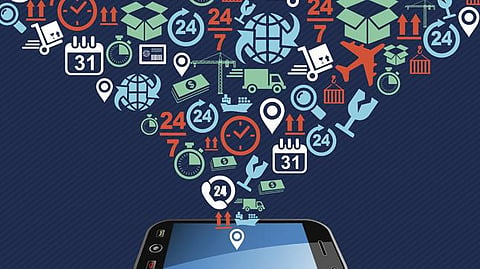Future Technology trends to revolutionise logistics
Robots, driverless vehicles, artificial intelligence, the future of logistics sounds like the script from a sci-fi movie. Except these ideas are no longer just fiction, but real emerging technologies that firms like FedEx are helping to bring to life. Here’s a look at some of the innovations set to revolutionise cargo delivery.
The logistics industry is worth £55 billion in the UK alone and trillions worldwide. FedEx CEO and chairman, Fred Smith, explained recently: “The world turns on innovation. FedEx is intent on innovating for good. We believe we’re responsible for creating not only business value for our stakeholders but societal value for our world.”
The investments that FedEx makes in the area of technological innovation, from robotics to artificial intelligence (AI), could radically alter the logistics landscape, impacting everything from small individual shipments to the movement of fleets of vehicles globally.
So what exactly are the latest techs?
Here’s a glimpse of what lies ahead.
• Driverless deliveries: picture a fleet of small, eco-friendly vehicles zipping around your neighbourhood making deliveries… with nobody in the driving seat. This may seem like the stuff of fantasy, but this is in fact real technology being developed by tech innovators at FedEx.
“Probably one of the biggest tech trends in the news today is autonomous vehicles, a combination of big data and AI,” says Smith. “It’s an important area in terms of safety since 90% of all accidents are caused by human error.”
• An AI app to initiate a shipment: one day we might be able to order a shipment simply by talking into our Amazon Echo or Google Home virtual assistant device. The AI-enabled Alexa app currently being developed by FedEx is being designed to eventually understand commands such as, “Alexa, prepare a shipment,” and is all about reducing the need for time-consuming form-filling or menu scrolling.
According to Rob Carter, CIO of FedEx and the man on the front line of the shipping giant’s tech innovation, you will be able to “talk your way through and [Alexa will] ask the right questions to make sure you’ve completed the work. Then you can expect a truck to roll up to the front door of your office, pick up the shipments, and move them along.”
• One driver controlling a convoy of trucks: FedEx has been working closely with Peloton Technology on the idea of “vehicle platooning”. This cutting-edge technology involves electronically linking trucks into small groups called “platoons”. Using wireless vehicle-to-vehicle communication, the driver of the truck in front controls the acceleration and breaks of the trucks behind him. This technology looks set to come into use at the end of the year and was designed to reduce wind resistance and save fuel.
• Trucks that drive themselves: according to Carter, we can expect to see fully autonomous trucks servicing the shipping industry within the next decade. FedEx has teamed up with auto pioneers Daimler and Volvo to develop this. The latter recently made a semi-autonomous journey on a highway in Germany and Volvo demonstrated a fully autonomous construction truck in a mine in Sweden.
• Robotic members of staff: in April the first public-facing robot at FedEx, Sam, was put to work in a FedEx office in New York, where a customer was able to pass Sam her broken Samsung device, which Sam then delivered to a technician in a back office. The front-office employee then completed the customer transaction. According to Fred Smith, we can expect to see more of these robotic assistants. Other FedEx robots currently include Lil’ Rico, Falcon and the aptly named Area 51.
• FedEx Online Virtual Assistant: this online assistant will eventually allow customers to order services by voice, hands- and paper-free on mobile devices. Simple, but effective.
• Drones to make commercial deliveries: though some companies are starting to use drones to make deliveries, Carter feels they have “limited capacity” owing to the fact they can only lift objects up to 5lb and fly 50 miles. However, he does say FedEx is looking into the viability of using fixed-wing drones that travel set distances for commercial deliveries.
• Courier robots: FedEx is deeply invested in the development of robot technology, particularly of the grounded rolling variety (as opposed to drones), which can carry heavy loads and travel farther. According to Carter, there’s a very real possibility we will see robots making deliveries to our homes and offices in years ahead.
Now imagine a future where some of these techs work together. You order your shipment through Alexa, a driverless vehicle pulls up, a courier robot comes to the door to get your package, it takes it back to the vehicle, and goes on its way. It’s pretty awe-inspiring stuff.
And for those of you wondering what happens to humans in this robotic future, Fred has some words of inspiration. “Don’t be afraid of technology and innovation and robotics. It makes people more productive. It makes goods less expensive. It makes life better.” (Fedex News).


